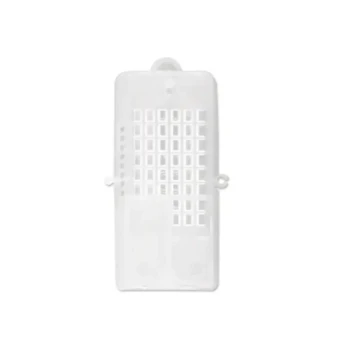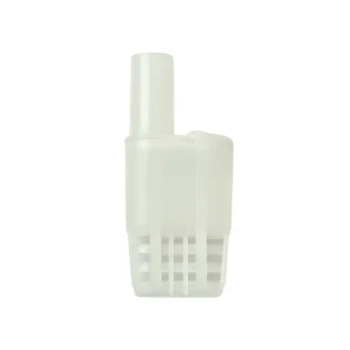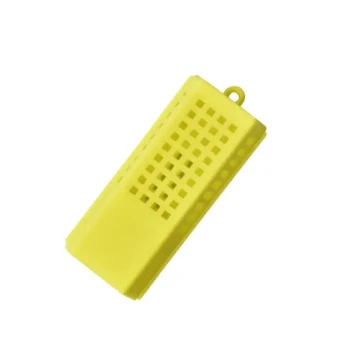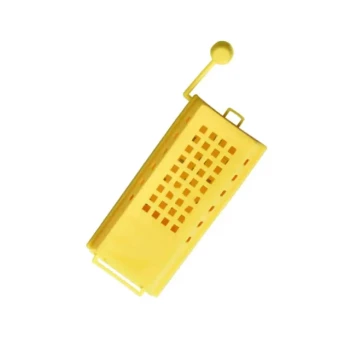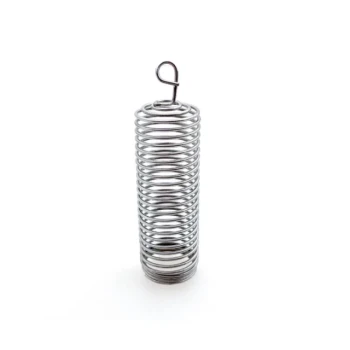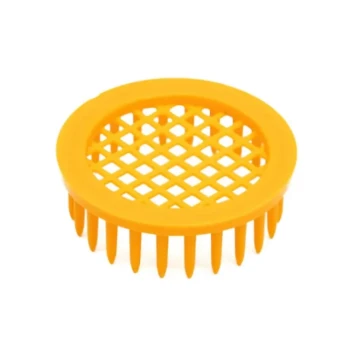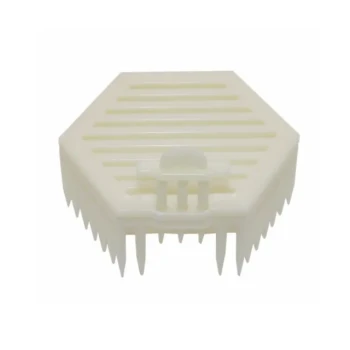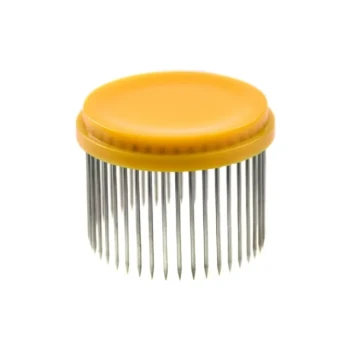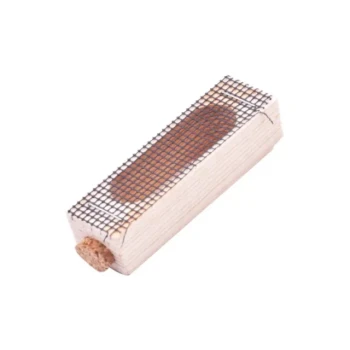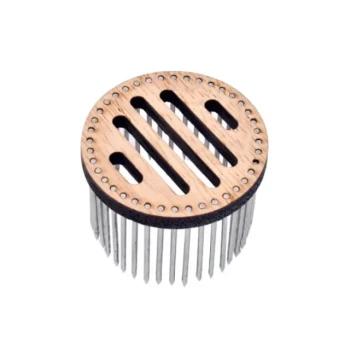In beekeeping, sequestration is the practice of confining a colony to its hive using an entrance screen for up to 72 hours immediately after moving it to a new location. The confinement disrupts the bees' normal routine, which can cause foraging bees to re-evaluate their surroundings and recalibrate their internal navigation when they are finally released, preventing them from returning to the hive's old site.
While confining bees (sequestration) can force them to reorient, it introduces significant risks like overheating and colony stress. A safer and more reliable method is to obstruct the hive entrance, which triggers the same reorientation behavior without the dangers of confinement.
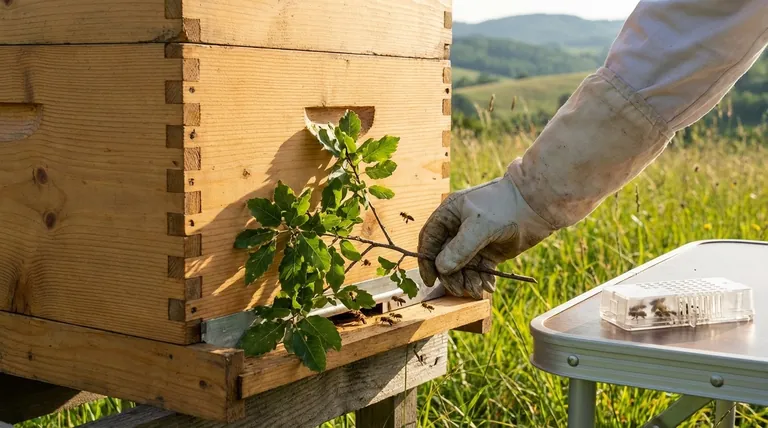
The Core Problem: A Bee's Internal GPS
Why Bees Get Lost
Foraging bees have a remarkable ability to navigate. They leave the hive and create a mental map of the surrounding landscape, allowing them to return precisely to their front door.
This navigation becomes so ingrained that they often exit and return on a form of autopilot. If you move a hive a short distance, the foragers will fly out and return to the empty original spot, unable to find their home.
The Goal of Reorientation
The goal of any reorientation technique is to break this autopilot behavior. You must introduce a stimulus that signals to the bee, "Attention: your environment has changed." This forces them to stop, hover, and perform orientation flights to map their new location.
Sequestration: The Confinement Method
How It Works in Theory
By locking the bees in the hive for one to three days, you completely interrupt their daily foraging schedule.
When the screen is finally removed, the dramatic change from their prolonged confinement can be enough to signal that something is fundamentally different, prompting some of the bees to reorient.
The Significant Risks of Sequestration
This method is rarely recommended by experienced beekeepers because the risks often outweigh the potential benefits. The primary dangers are severe and can lead to the loss of the entire colony.
Understanding the Trade-offs and Dangers
The Critical Danger of Overheating
A honey bee colony generates a tremendous amount of heat. Confining them with an entrance screen severely restricts airflow and ventilation.
In warm or hot weather, the hive's internal temperature can rise to lethal levels very quickly, effectively cooking the colony. This is the single greatest risk of sequestration.
Unnecessary Colony Stress
Confinement is an unnatural state for bees. It prevents them from foraging for nectar, pollen, and water. It also stops them from taking necessary cleansing flights.
This forced inactivity places the entire colony under significant stress, which can weaken it and make it more susceptible to pests and diseases.
A Safer Alternative: The Obstruction Method
Forcing a New Perspective
A far safer and more effective technique is to place a physical obstruction directly in front of the hive entrance immediately after moving it.
A leafy branch, a pile of grass, or a board leaned against the entrance works perfectly. This does not trap the bees but creates a minor obstacle.
Why It Works So Well
When a bee attempts to leave the hive on its usual autopilot flight path, it immediately bumps into the branch.
This unexpected barrier forces it to stop, hover, and navigate around the object. In doing so, it turns back and looks at the hive, consciously registering its new location and surroundings. This simple act reliably triggers the necessary reorientation flights.
The Benefit of a Low-Stress Solution
The obstruction method achieves the reorientation goal without any of the dangers of sequestration. The colony can still ventilate itself, and bees can continue to forage and go about their duties. It works with their natural instincts rather than against them.
Making the Right Choice for Your Hive
Choosing the correct method depends entirely on the distance of the move and your tolerance for risk.
- If your primary focus is moving a hive a short distance (under 3 miles): Use the obstruction method. It is the safest and most reliable way to force bees to reorient without endangering the colony.
- If your primary focus is moving a hive a long distance (over 3 miles): No special action is usually needed. The landscape will be completely new, forcing the bees to naturally reorient to their new environment.
- If your primary focus is hive safety above all: Never use sequestration, especially in warm weather. The risk of colony death from overheating is simply too high.
By understanding the bee's natural behavior, you can guide their reorientation effectively without resorting to high-risk interventions.
Summary Table:
| Method | How It Works | Key Risk/Benefit |
|---|---|---|
| Sequestration | Confines bees in hive for 1-3 days. | High Risk: Overheating, colony stress, potential death. |
| Obstruction | Places a branch/obstacle at the hive entrance. | High Benefit: Forces reorientation safely with minimal stress. |
Ensure a Safe and Successful Hive Move with HONESTBEE
Moving hives is a critical operation for commercial apiaries and distributors. Using the wrong method can lead to devastating colony loss. HONESTBEE supplies the durable, reliable beekeeping equipment you need to manage your hives safely and efficiently.
Our wholesale-focused operations provide commercial-scale solutions to protect your valuable assets. Contact our experts today to discuss your specific needs and ensure your next hive relocation is a success.
Get in Touch for Your Commercial Beekeeping Solutions
Visual Guide
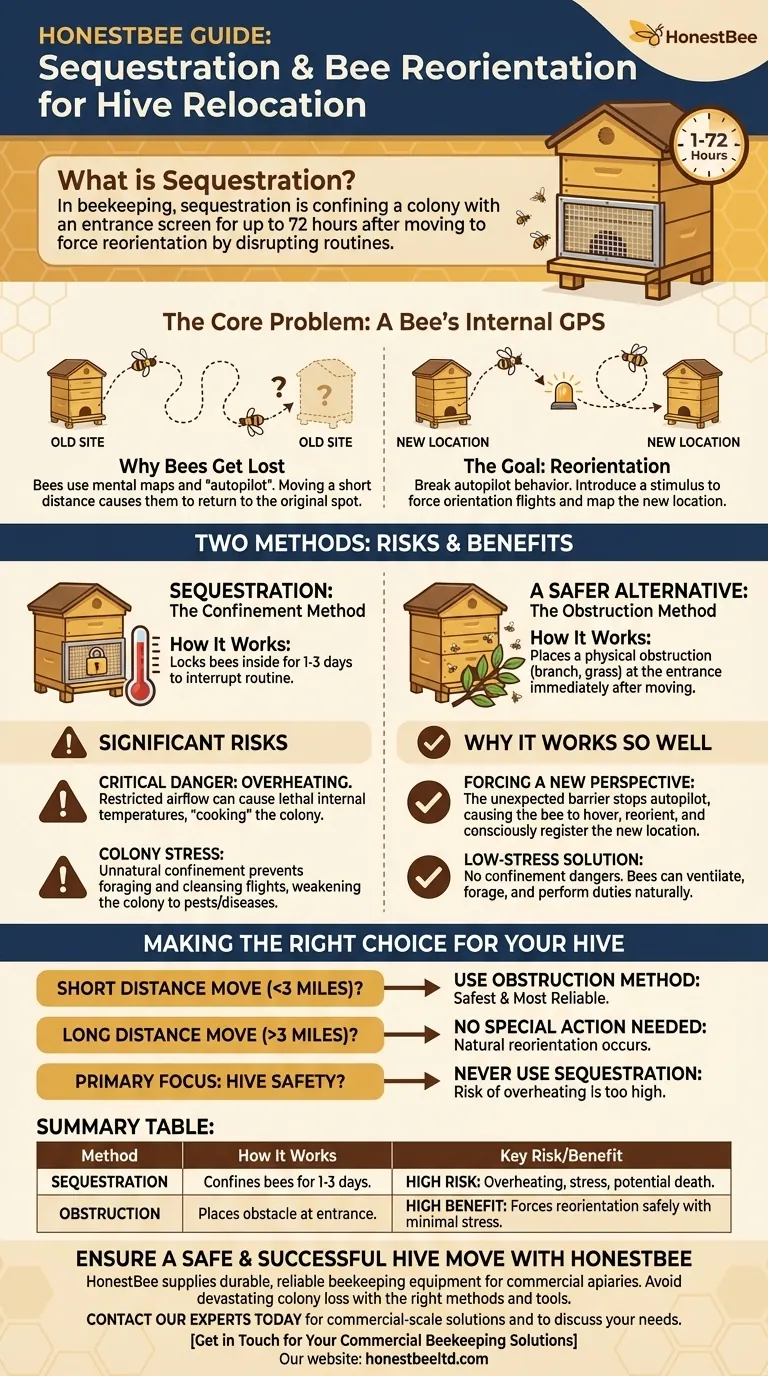
Related Products
- Professional Multi-Functional Queen Bee Cage
- Multi-Function Queen Roller Cage and Catcher
- Professional Multi-Compartment Queen Cage with Sliding Lid
- Professional Queen Cage with Sliding Gate and Feeder Plug
- Durable Galvanized Steel Spring Queen Bee Cage
People Also Ask
- What are common mistakes to avoid when using queen cages? Ensure Successful Queen Introduction
- How do you check if the queen has been released after installation? A Guide to Successful Queen Acceptance
- Why might bees reject a new queen? A Guide to Successful Queen Introduction
- What are the components of a standard queen cage? A Guide to Safe Queen Introduction
- How long does it typically take bees to adjust to a new queen? Master the 2-7 Day Acceptance Window
